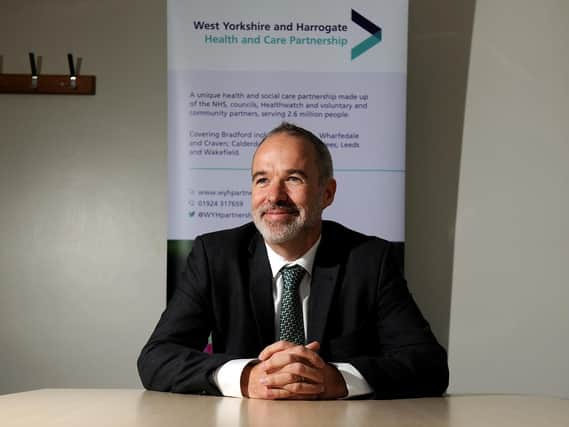Top health chief describes continuing toll of pandemic on region and ongoing work to tackle its effects


Rob Webster, chief executive lead of the West Yorkshire and Harrogate Health and Care Partnership (WY&H HCP) - which brings together the county’s councils, NHS bodies and the voluntary sector - provided an update on how the pandemic continues to affect healthcare and the lives in communities across the area, in his report to this week's partnership board meeting.
He said hospitals were seeing “more children and young people with Covid-19” as well as an increase in respiratory illnesses - particularly Respiratory Syncytial Virus (RSV) which can cause bronchiolitis in babies and infants under two, of which levels are described as “surging”, he said.
Advertisement
Hide AdAdvertisement
Hide AdIt follows a warning by NHS England, previously reported by the YEP, for health services to anticipate increases in childhood respiratory infections over the summer.
In his report, Mr Webster also described “record levels” of demand for ambulances services and “sustained pressure” in the county’s emergency departments as well as high levels of mental health crisis calls.
Figures show during July 2021, there had been a “significant” increase in 999 demand, with calls up 14.3 per cent between June and July, including a sharp rise in “information only and pandemic related calls”.
In that time, the highest increase in emergency demand was noted in patients aged up to nine. That age group also accounted for the highest total number of patients, at 12,389, followed by those aged 20-29, at 10,347.
Advertisement
Hide AdAdvertisement
Hide AdHe said: “We are working with Healthwatch for insight on young adults presenting to emergency departments. Our Urgent and Emergency Care (UEC) Programme is delivering on a range of priorities to support this, including boosting support for NHS 111 capacity, same day emergency care offers, public campaigns and sharing best practice on flow across the system.”
Mr Webster also highlighted the broader impact of the pandemic on society and the economy in his report, which said the number of people claiming out of work benefit, while falling, still remains 74 per cent higher than in February 2020.
The number of claimants in West Yorkshire in June was 98,300 - a decrease of four per cent, but less than the 5.6 per cent fall seen nationally.
Planned care in West Yorkshire, his report said, has been recovering “ahead of plan” from April to June 2021, with overall activity having reached around 85 per cent of pre-pandemic levels.
Advertisement
Hide AdAdvertisement
Hide AdBut any further increases have since been impacted by “urgent care pressures, staff absences and increases in the number of Covid-positive patients requiring hospital care”.
He cited figures of around 200,000 people waiting for some type of elective surgery or planned procedure in West Yorkshire - of which, 12,000 had been waiting for over a year.
Each hospital trust has local recovery plans, he said, with the numbers of people waiting now falling.
He said a system-wide seven-point action plan is also in place “to ensure that we recover the position as quickly as possible”.
Advertisement
Hide AdAdvertisement
Hide AdThis plan includes factors such as clear communication with those on waiting lists, shared arrangements between GPs and consultants to manage people in the community rather than in hospital, maximising hospital capacity between trusts, using the independent sector and sharing best practice on patient flow.
Other examples of work underway to mitigate the pandemic’s impact include new technologies to support diabetes treatment such as the recent Healthy.io project which uses smartphone technology to pick up early signs of kidney damage . It comes as figures show a huge rise in diabetes referrals - with 1,799 between April 2021 and June 2021 - 162 per cent higher than the 686 over the same period last year.
Mr Webster also praised the WY&H HCP’s “ground-breaking” work with people with learning difficulties where collaboration had led to 75 per cent now being offered an annual health check and improved uptake of Covid-19 vaccines.
Support the YEP and become a subscriber today. Enjoy unlimited access to local news and the latest on Leeds United, With a digital subscription, you see fewer ads, enjoy faster load times, and get access to exclusive newsletters and content. Click here to subscribe.
Comment Guidelines
National World encourages reader discussion on our stories. User feedback, insights and back-and-forth exchanges add a rich layer of context to reporting. Please review our Community Guidelines before commenting.